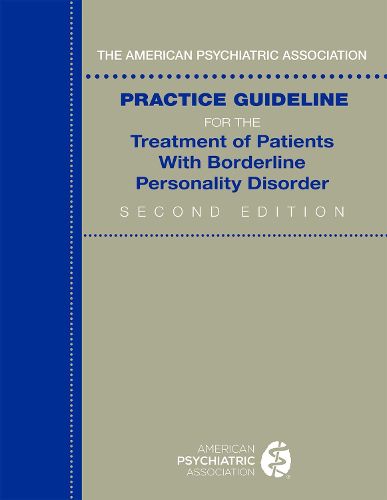Readings Newsletter
Become a Readings Member to make your shopping experience even easier.
Sign in or sign up for free!
You’re not far away from qualifying for FREE standard shipping within Australia
You’ve qualified for FREE standard shipping within Australia
The cart is loading…






Borderline personality disorder (BPD) is estimated to have a lifetime prevalence in the United States of approximately 1.4%-2.7%. It is characterized by a long-term pattern of instability in interpersonal relationships, unstable self-image, marked impulsivity, and/or affective instability. In addition, features can be evidenced by efforts to avoid real or feared abandonment, chronic feelings of emptiness, mood reactivity, recurrent self-injurious or suicidal behavior, other impulsive behaviors with potential for self-damaging effects, intense anger or difficulty with anger control, and transient paranoid ideation or stress-related dissociative symptoms. Although these manifestations can be quite heterogeneous, the lived experience of BPD can be associated with significant emotional pain and a diminished quality of life. Many individuals with BPD have co-occurring psychiatric or somatic conditions, and all-cause mortality is increased among those with BPD. Furthermore, the lifetime burden and psychosocial impairment associated with BPD can be substantial because it typically has an early onset and can persist for many years. These significant consequences support the need for early identification of BPD. Importantly, in contrast to many earlier views on BPD, treatment is effective, and symptoms can be reduced and managed.
The American Psychiatric Association Practice Guideline for the Treatment of Patients With Borderline Personality Disorder reviews current evidence and provides evidence-based statements that are intended to optimize the treatment of BPD. The guideline focuses on evidence-based treatments and includes additional information on assessment and treatment planning, which are an integral part of patient-centered care. It describes approaches to implementing recommendations and suggestions in clinical practice. By providing up-to-date knowledge, the guideline aims to help clinicians feel more confident in their skills for treating patients with BPD, thereby improving the care and well-being of their patients.
$9.00 standard shipping within Australia
FREE standard shipping within Australia for orders over $100.00
Express & International shipping calculated at checkout
Borderline personality disorder (BPD) is estimated to have a lifetime prevalence in the United States of approximately 1.4%-2.7%. It is characterized by a long-term pattern of instability in interpersonal relationships, unstable self-image, marked impulsivity, and/or affective instability. In addition, features can be evidenced by efforts to avoid real or feared abandonment, chronic feelings of emptiness, mood reactivity, recurrent self-injurious or suicidal behavior, other impulsive behaviors with potential for self-damaging effects, intense anger or difficulty with anger control, and transient paranoid ideation or stress-related dissociative symptoms. Although these manifestations can be quite heterogeneous, the lived experience of BPD can be associated with significant emotional pain and a diminished quality of life. Many individuals with BPD have co-occurring psychiatric or somatic conditions, and all-cause mortality is increased among those with BPD. Furthermore, the lifetime burden and psychosocial impairment associated with BPD can be substantial because it typically has an early onset and can persist for many years. These significant consequences support the need for early identification of BPD. Importantly, in contrast to many earlier views on BPD, treatment is effective, and symptoms can be reduced and managed.
The American Psychiatric Association Practice Guideline for the Treatment of Patients With Borderline Personality Disorder reviews current evidence and provides evidence-based statements that are intended to optimize the treatment of BPD. The guideline focuses on evidence-based treatments and includes additional information on assessment and treatment planning, which are an integral part of patient-centered care. It describes approaches to implementing recommendations and suggestions in clinical practice. By providing up-to-date knowledge, the guideline aims to help clinicians feel more confident in their skills for treating patients with BPD, thereby improving the care and well-being of their patients.